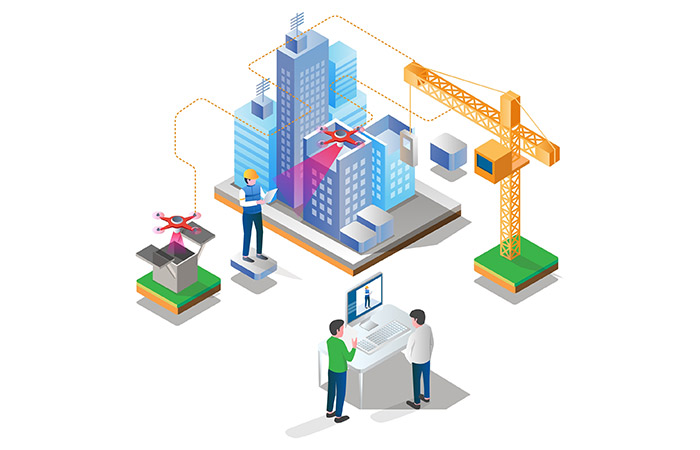
Building Information Modelling
BIM Asset Management

Another important aspect of BIM is BIM Asset Management. This service allows us to use Building Information Modelling most beyond the construction phase. Using the BIM model as the central repository of information would allow the continuous management and maintenance of building assets.
Data Integration: BIM models seamlessly integrate with asset management systems, resulting in a comprehensive database containing exhaustive information on building components, equipment, warranties, and planned maintenance schedules. This facilitates efficient facility management and prolongs the lifespan of assets.
Lifecycle Information: From the specifications, installation date, maintenance history, and even the expected lifestyle, detailed information regarding each asset is provided within the BIM model.
Facility Management: BIM Asset Management plays a pivotal role in supporting facility managers with their daily operations. These encompass space planning, predictive maintenance scheduling, and efficient asset tracking. This integrated approach streamlines facility management.
Maintenance Optimisation: With access to comprehensive asset information, facility managers can help optimise maintenance activities and prioritise repairs, extending the equipment’s lifespan.
Space Planning: Using BIM models, efficient space planning can be carried out diligently.
Energy Efficiency: The BIM model empowers energy consumption monitoring and optimization, fostering sustainability and delivering substantial cost savings. It ensures eco-friendly practices while enhancing cost-efficiency within building operations.
Efficient Operations: Facility managers can access up-to-date asset information, streamlining operations and maintenance.
Cost Savings: Proactive maintenance and optimised asset management lead to cost savings through reduced downtime and repair expenses.
Sustainability: BIM Asset Management supports sustainable building practices by enabling energy-efficient operations and informed upgrade decisions.
Improved Decision-Making: Facility managers can make data-driven decisions regarding asset replacements, upgrades, and renovations.
Compliance and Documentation: Organisations can easily track compliance with regulations and standards and maintain comprehensive documentation.
Data Integration: BIM models seamlessly integrate with asset management systems, resulting in a comprehensive database containing exhaustive information on building components, equipment, warranties, and planned maintenance schedules. This facilitates efficient facility management and prolongs the lifespan of assets.
Lifecycle Information: From the specifications, installation date, maintenance history, and even the expected lifestyle, detailed information regarding each asset is provided within the BIM model.
Facility Management: BIM Asset Management plays a pivotal role in supporting facility managers with their daily operations. These encompass space planning, predictive maintenance scheduling, and efficient asset tracking. This integrated approach streamlines facility management.
Maintenance Optimisation: With access to comprehensive asset information, facility managers can help optimise maintenance activities and prioritise repairs, extending the equipment’s lifespan.
Space Planning: Using BIM models, efficient space planning can be carried out diligently.
Energy Efficiency: The BIM model empowers energy consumption monitoring and optimization, fostering sustainability and delivering substantial cost savings. It ensures eco-friendly practices while enhancing cost-efficiency within building operations.
Efficient Operations: Facility managers can access up-to-date asset information, streamlining operations and maintenance.
Cost Savings: Proactive maintenance and optimised asset management lead to cost savings through reduced downtime and repair expenses.
Sustainability: BIM Asset Management supports sustainable building practices by enabling energy-efficient operations and informed upgrade decisions.
Improved Decision-Making: Facility managers can make data-driven decisions regarding asset replacements, upgrades, and renovations.
Compliance and Documentation: Organisations can easily track compliance with regulations and standards and maintain comprehensive documentation.
2015
Year Of
Establishment
250+
Projects
Completed
10+
Years Of
Experience
40+
Million
SQFT Area
Served


